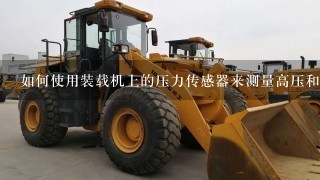如何使用装载机上的压力传感器来测量高压和低压的可靠性?

Answer:
1. Understand the Pressure Sensor:
- The pressure sensor is a device that measures and displays the pressure exerted on a surface.
- It typically consists of a diaphragm with a pressure-sensitive element, such as a strain gauge or a pressure sensor.
- The diaphragm changes shape or area when pressure is applied, which is detected by the sensor.
2. Set Up the Pressure Sensor:
- Ensure that the pressure sensor is properly connected to the load and the data acquisition system.
- Set the desired pressure range and sensitivity for the sensor.
3. Data Acquisition and Recording:
- Start data acquisition and record pressure readings continuously.
- Use a data acquisition system with a stable and reliable recording mechanism.
4. Data Analysis:
- Plot the pressure readings over time.
- Analyze the data to identify any deviations or trends in pressure readings.
- Calculate the average, minimum, and maximum pressure values.
5. Reliability Assessment:
- Compare the pressure readings from the sensor to other monitoring devices, such as pressure gauges or pressure switches.
- Check for any discrepancies or outliers.
- Analyze the data to identify any factors that may affect the sensor's reliability.
6. Data Interpretation:
- Based on the data analysis, determine the reliability of the pressure sensor.
- Identify any areas where the sensor may experience errors or inaccuracies.
- Use this information to make necessary adjustments or replacements.
Tips for Reliability:
- Use a high-quality pressure sensor with a proven track record of reliability.
- Ensure that the sensor is properly installed and calibrated according to the manufacturer's instructions.
- Use a reliable data acquisition system with a high sampling rate and low noise.
- Monitor the sensor's health and replace it when necessary.





































































